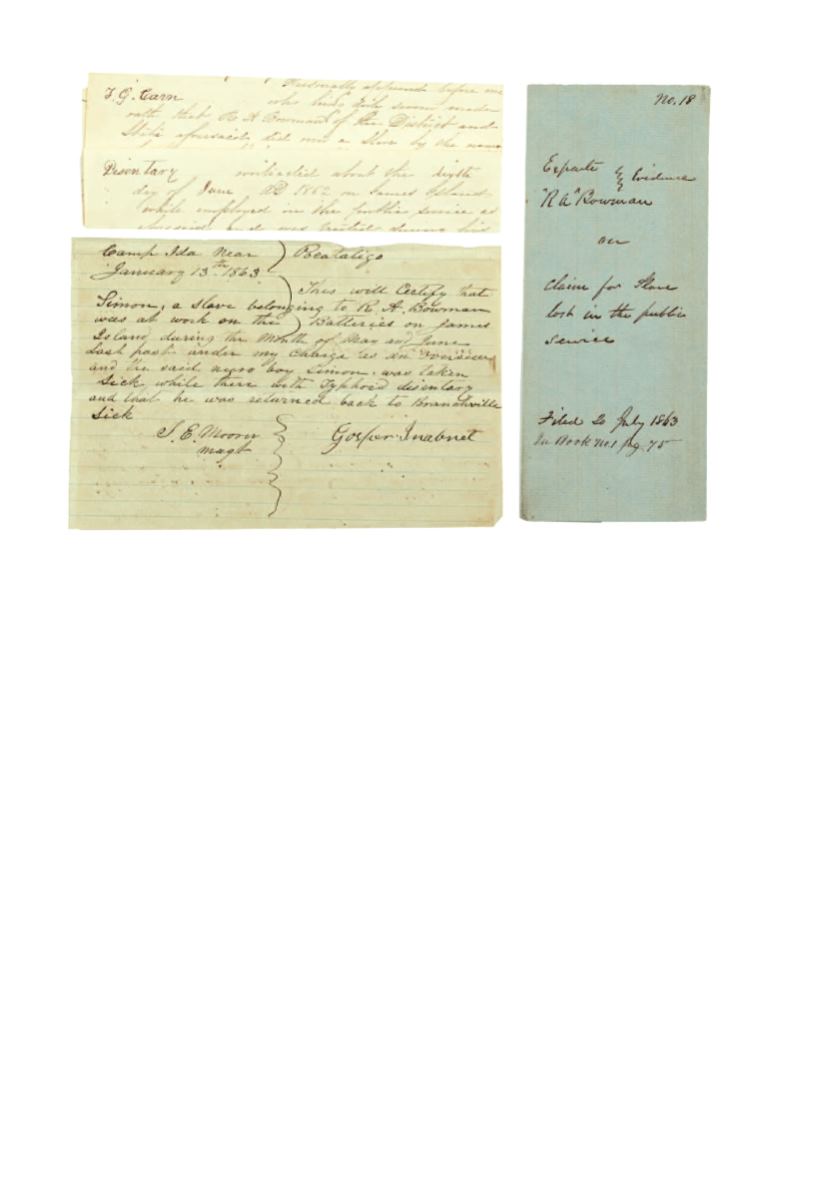

365
●
(MILITARY—CIVIL WAR.)
Petition for the value of Simon, a slave lost
to typhoid fever while working the fortifications on James Island.
Single long par-
tially printed document accomplished by hand; folded and docketed on the reverse: note in
red pencil “Allowed $1000 1 Nov, 1863.” Together with three other manuscript pages of
related documents.
SHOULD BE SEEN
.
South Carolina, 1863
[500/750]
Typical forms for remuneration for the loss of a slave, including statement from a doctor as to the man-
ner of death etc. Many slaves were lost working the fortifications on James Island and elsewhere. A
monument was erected there in 2013 to honor them.
366
●
(MILITARY—CIVIL WAR.) TIBBS, ALEXANDER.
Papers of a Corporal in
the 64th United States Colored Infantry, chronicling his enrollment, promotion
from private to corporal (2 documents), discharge, and applications for pension,
and his subsequent peacetime “truck-farm,” lease agreement to grow cotton
with Klapp & Shaw, a large commercial plantation.
A total of seven partially printed
documents accomplished by hand. The last one with considerable manuscript notations.
Vp, 1863-1890
[3,000/4,000]
A fascinating group of documents chronicling a black soldier’s Civil War and peacetime experience.
Alexander Tibbs joined the Union army on December 18th, 1863. He was discharged on March
13th 1866. The 64th Colored Infantry was organized from the 7th Louisiana Infantry (African
Descent). It functioned for the most part in garrison duty and was mustered out in Mississippi. There
seems to be a nine year gap in Corporal Tibbs life that we have no record of. In 1877, he signed a
complex agreement with Klapp & Shaw, the terms of which put him into virtual slavery as a share-
cropper. Emancipation and Reconstruction with no real protection for the tens of thousands of homeless
or near homeless freedmen, provided the perfect opportunity for large farms like Klapp & Shaw to
exploit the needy. Tibbs was able to get a pension of twelve dollars a month from the government in
1891. This was raised twice more, the last time in 1925, for seventy-two dollars a month. The latter
was signed by Winfield Scott, commissioner of pensions.
365









